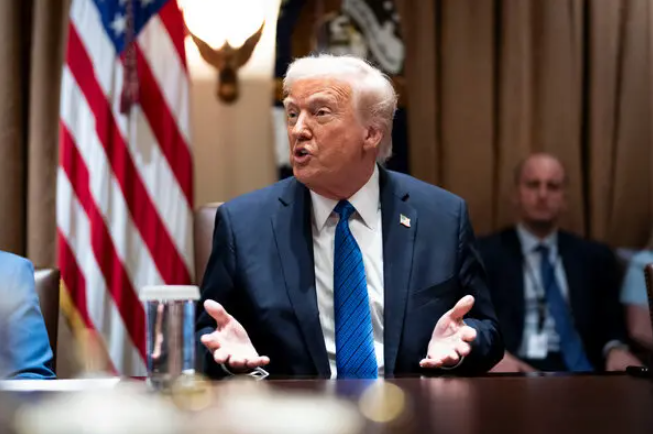Well, if you thought the Signal group chat drama was going to lead to a purge inside Trump’s national security team—think again. Over the weekend, former President Donald Trump made it crystal clear: no firings are coming, no heads are rolling, and in typical Trump fashion, he’s chalking the entire story up to what he calls “fake news” and “another witch hunt.”
In a quick but pointed phone interview with NBC News, Trump downplayed the now-confirmed Signal messaging thread that accidentally included The Atlantic’s Jeffrey Goldberg—yes, that Jeffrey Goldberg. “I don’t fire people because of fake news and because of witch hunts,” Trump said, brushing off the entire affair like a fly on his lapel.
Now, let’s rewind. On March 15, members of Trump’s national security inner circle—Vice President JD Vance, National Security Advisor Mike Waltz, Secretary of Defense Pete Hegseth, Director of National Intelligence Tulsi Gabbard, and others—were discussing strategic airstrikes on Houthi militants in Yemen via a Signal group chat. Goldberg says he was “inadvertently” added to the conversation. What followed was media chaos.
Goldberg did what reporters do: he took screenshots and ran the story. But what followed wasn’t just a media storm—it was a coordinated Trump team counterstrike.
Trump’s message? The strike was “tremendously successful,” “very hard,” and “very lethal.” And, according to him, that’s the story everyone should be talking about. Not Signal. Not a leaked chat. Certainly not Jeffrey Goldberg.
And the White House is backing him. Press Secretary Karoline Leavitt slammed Goldberg by name—hard—calling him a “registered Democrat,” a “hoax-pusher,” and even dragged his wife into it, calling her a donor to Hillary Clinton. This wasn’t just a defense—it was a demolition.
Let’s not forget, this is the same Goldberg who wrote the “suckers and losers” piece in 2020, the “Russia hoax” headlines, and now, the accidental group chat leak story that, once again, has Team Trump on offense.
And just in case anyone thought there might be consequences internally, Trump was firm: he still has confidence in Waltz and Hegseth. “I do,” he said, leaving no room for interpretation.
The White House confirmed the chat was real, yes. But they also made clear: no classified intel, no locations, no sources, no war plans. Just a media frenzy over what they say was a glorified scheduling thread—and a mistake, not a breach.
So here we are: no firings, no panic inside Trump world, and a firm pivot back to the message Trump wants to push—success abroad, strength at home, and a press corps he sees as obsessed with sideshows.


